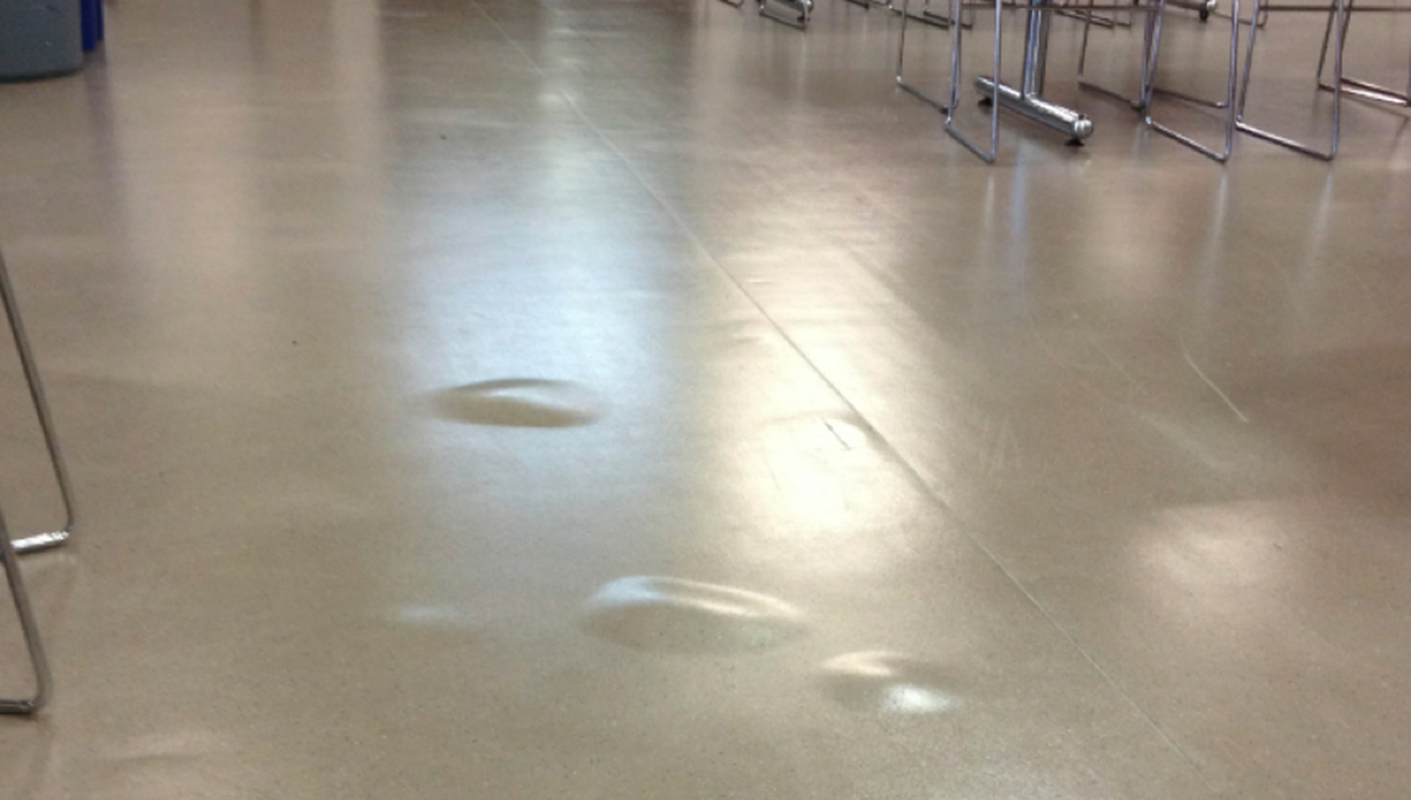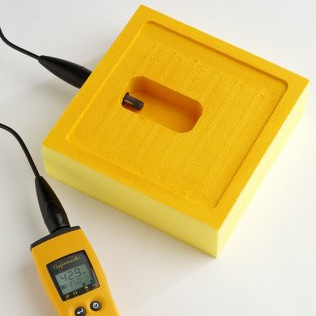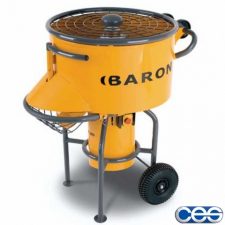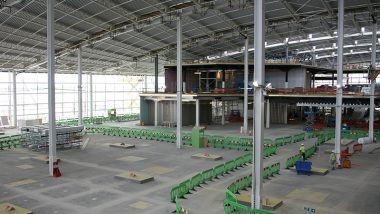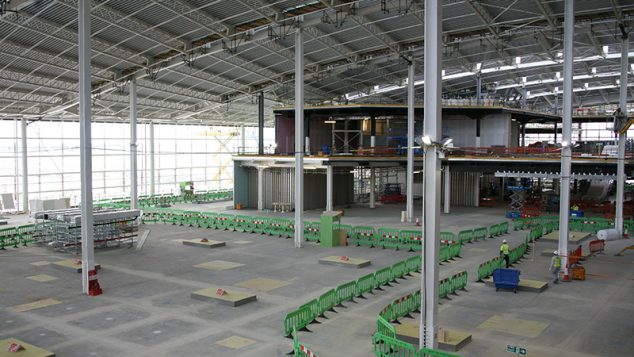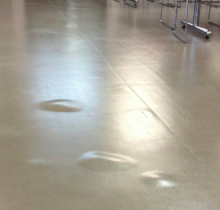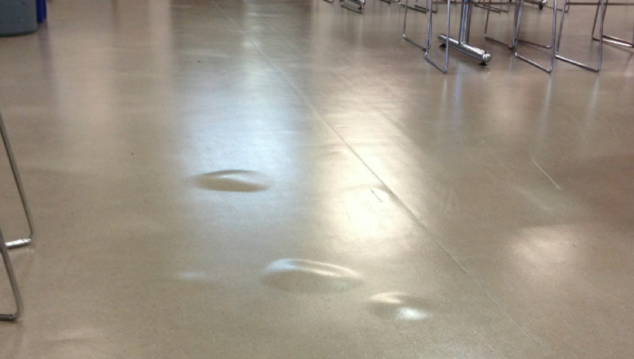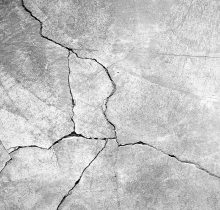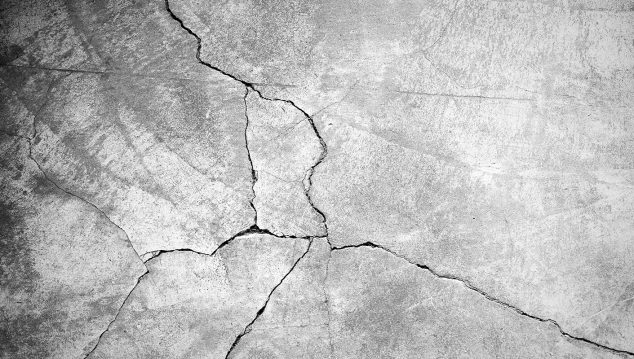Drying of Ronacrete products cured at 20°C and approximately 60-65% relative air humidity
When tested in the laboratory at ≥ 50mm thickness, RonaScreed 1 Day Overlay screed will typically achieve 75% relative humidity in approximately 24 hours, when cured at 20°C and approximately 60-65% relative humidity, thinner screeds may take 36 hours. 75% relative humidity at the surface indicates that the screed is sufficiently dry for application of resilient floorings, carpet, quarry tiles, ceramic tiles and stone tiles. Lower temperature and higher humidity may extend the drying period.
Drying of RonaScreed FastDry Prompt Mix 3 (3:1 by weight) has been tested at 50mm, 75mm and 100mm thickness. At 50mm thickness, 20°C temperature and 60-65% air humidity, RonaScreed FastDry Prompt dries to 75% RH after 4 days of air curing and at 75-100mm thickness, 20°C temperature and 60-65% air humidity, RonaScreed FastDry Prompt Mix 3 dries to 75% RH after 6 days of air curing. 75% relative humidity at the surface indicates that the screed is sufficiently dry for application of resilient floorings, carpet, quarry tiles, ceramic tiles and stone tiles. Ronacrete Laboratory tests and independent tests by Vinci Technology confirm the predictability of results shown in the technical data. Drying time on site will vary according to site conditions. Increased screed thickness, lower temperature and higher humidity will lengthen the drying period; increasing the aggregate/ cement ratio will also increase drying time.
When tested in the laboratory at 50mm thickness, Ronafix polymer modified screeds achieve 75% relative humidity at the screed surface after approximately 10 days of air curing at 20°C and approximately 60-65% relative humidity; 15mm thickness of Ronafix polymer modified screed will typically dry in 3 days. 75% relative humidity at the surface indicates that the screed is sufficiently dry for application of resin floorings and waterproof membranes, resilient floorings, carpet, quarry tiles, ceramic tiles and stone tiles. Increased screed thickness, lower temperature and higher humidity will lengthen the drying period; increasing the aggregate/ cement ratio will also increase drying time.
Screeds should be sufficiently dry and strong before forced drying commences, at a temperature of 20°C and air humidity of 60-65%, RonaScreed FastDry Prompt Mix 3 dries to 80% RH after approximately 2 days of air curing at a thickness of 75mm and will gain a high proportion of its ultimate strength after the same period of curing. At this stage, forced drying may commence. Forced drying should be delayed at lower temperatures and when air humidity is high or when RonaScreed FastDry Prompt has been added to a weaker mix design.
Screeds should be sufficiently dry and strong before commissioning of underfloor heating commences, at a temperature of 20°C and air humidity of 60-65%, RonaScreed FastDry Prompt dries to 80% RH after approximately 2 days of air curing at a thickness of 75mm and will gain a high proportion of its ultimate strength after the same period of curing. At this stage, underfloor heating may be turned on and the temperature may be gradually increased in accordance with the instructions of the heating manufacturer. Commissioning should be delayed at lower temperatures and when air humidity is high or when RonaScreed FastDry Prompot has been added to a weaker mix design, but it should still be possible to use the heating system to reduce drying time at lower temperature, which may be important in thicker sections of screed.

